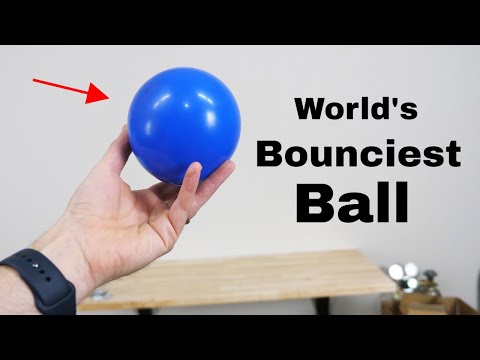What Affects How High A Ball Bounces: Factors At Play
A Ball That Bounces Higher Than Its Drop Height
Keywords searched by users: What affects how high a ball bounces why do balls bounce differently, bounce height of a ball experiment, why does a ball bounce, why does a ball bounce physics, what bouncy ball bounces the highest, why does a ball bounce higher when dropped higher, how does temperature affect the bounce of a ball, how does the material of a ball affect its bounce
What Affects The Bounce Of A Basketball?
“What factors influence the rebound height of a basketball when it bounces? The bounce of a basketball is influenced by the amount of energy it absorbs from the surface it contacts. When a basketball is bounced on a relatively hard surface, it loses less energy to the surface, resulting in a higher bounce. In contrast, when it’s bounced on a softer surface, it loses more energy to that surface, leading to a lower bounce. This fundamental concept helps explain why a basketball exhibits different bounce heights on various surfaces.” [Source: May 1, 2014]
What Makes A Ball Bounce Higher Than The Other?
Have you ever wondered why one ball bounces higher than another? To understand this phenomenon, we need to delve into the science behind it. When a ball is dropped, it gains potential energy due to gravity, which is then converted into kinetic energy when it bounces back up. This energy isn’t simply stored in the chemical bonds of the atoms, as commonly believed, but rather in the separation of the reacting molecules within the ball. In essence, the way the molecules are arranged and how they interact play a crucial role in determining how high a ball will bounce. To explore this further, you can watch the video titled “A Ball That Bounces Higher Than Its Drop Height” on YouTube.
Does Heat Or Cold Affect How High A Ball Bounces?
Do temperature variations impact a ball’s bounce height? Yes, they do. When comparing a warm ball to a cold one, you’ll notice that the warmer ball tends to bounce higher. This phenomenon can be attributed to two key factors. Firstly, inside a hollow ball, temperature fluctuations lead to alterations in the air pressure contained within the ball. This happens because air pressure and temperature have a direct proportional relationship, as explained by Cook (2011). Consequently, as the temperature rises, so does the air pressure inside the ball. Secondly, another factor influencing bounce height is the elasticity of the ball’s materials. Warmer temperatures generally make the materials more elastic, which results in a more energetic rebound when the ball makes contact with a surface. Therefore, when it comes to a ball’s bounce, both temperature-induced air pressure changes and material elasticity play crucial roles in determining how high it goes.
Categories: Aggregate 91 What Affects How High A Ball Bounces
See more here: taomalumdongtien.net

The combination of the material properties of a ball (surface textures, actual materials, amount of air, hardness/ softness, and so on) affects the height of its bounce.The more energy absorbed by the surface, the less that remains in the ball for it to bounce. This is why you should have seen that when you bounced the basketball on a relatively hard surface it bounced higher (it lost less energy) compared with when it was bounced on a softer surface (where it lost more energy).A warmer ball will bounce higher than a cold one. The reason for this is twofold. In a hollow ball, the change in temperature causes a change in air pressure within the ball. In an enclosed situation, air pressure is directly proportional to temperature (Cook, 2011).
Learn more about the topic What affects how high a ball bounces.